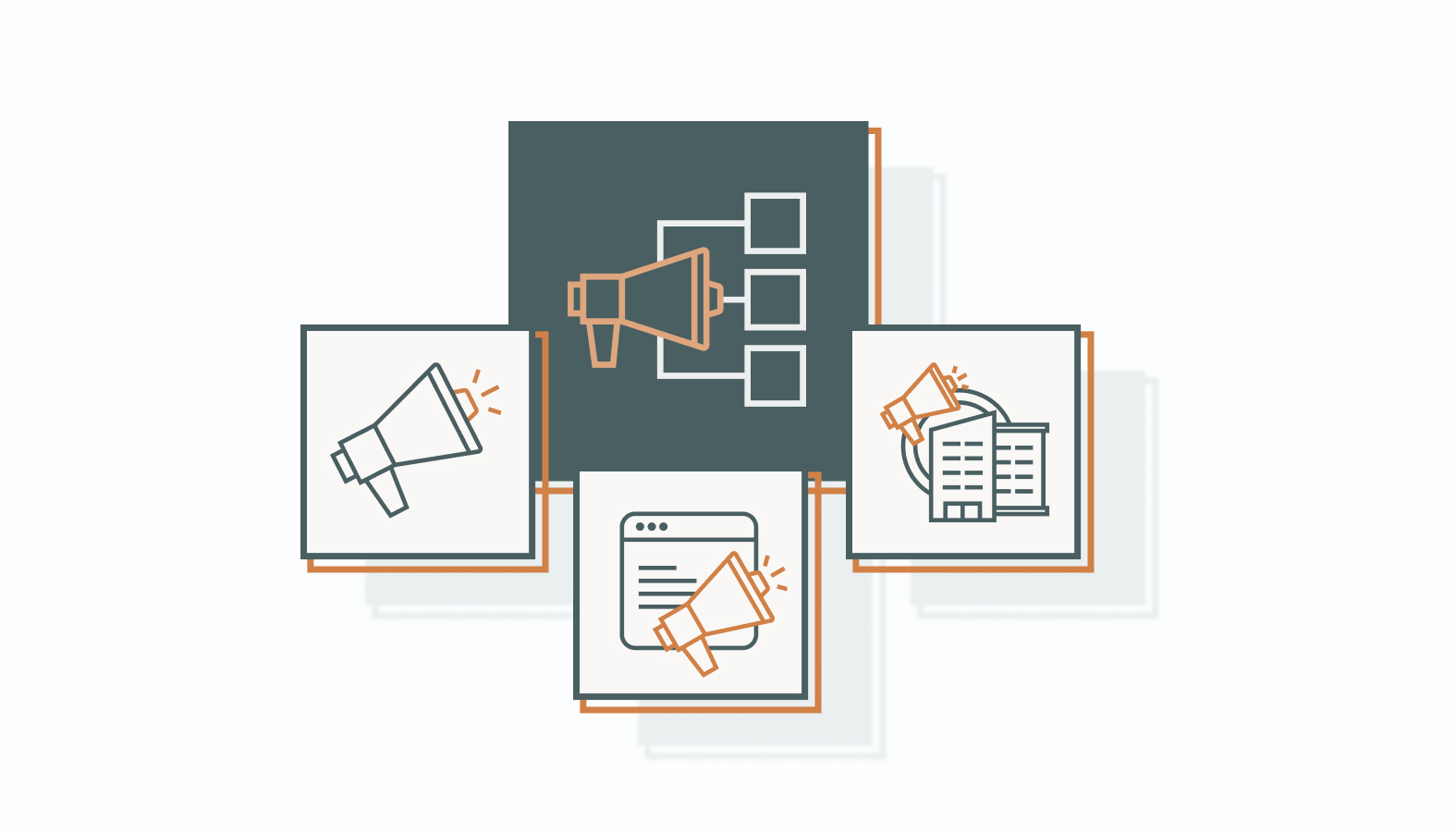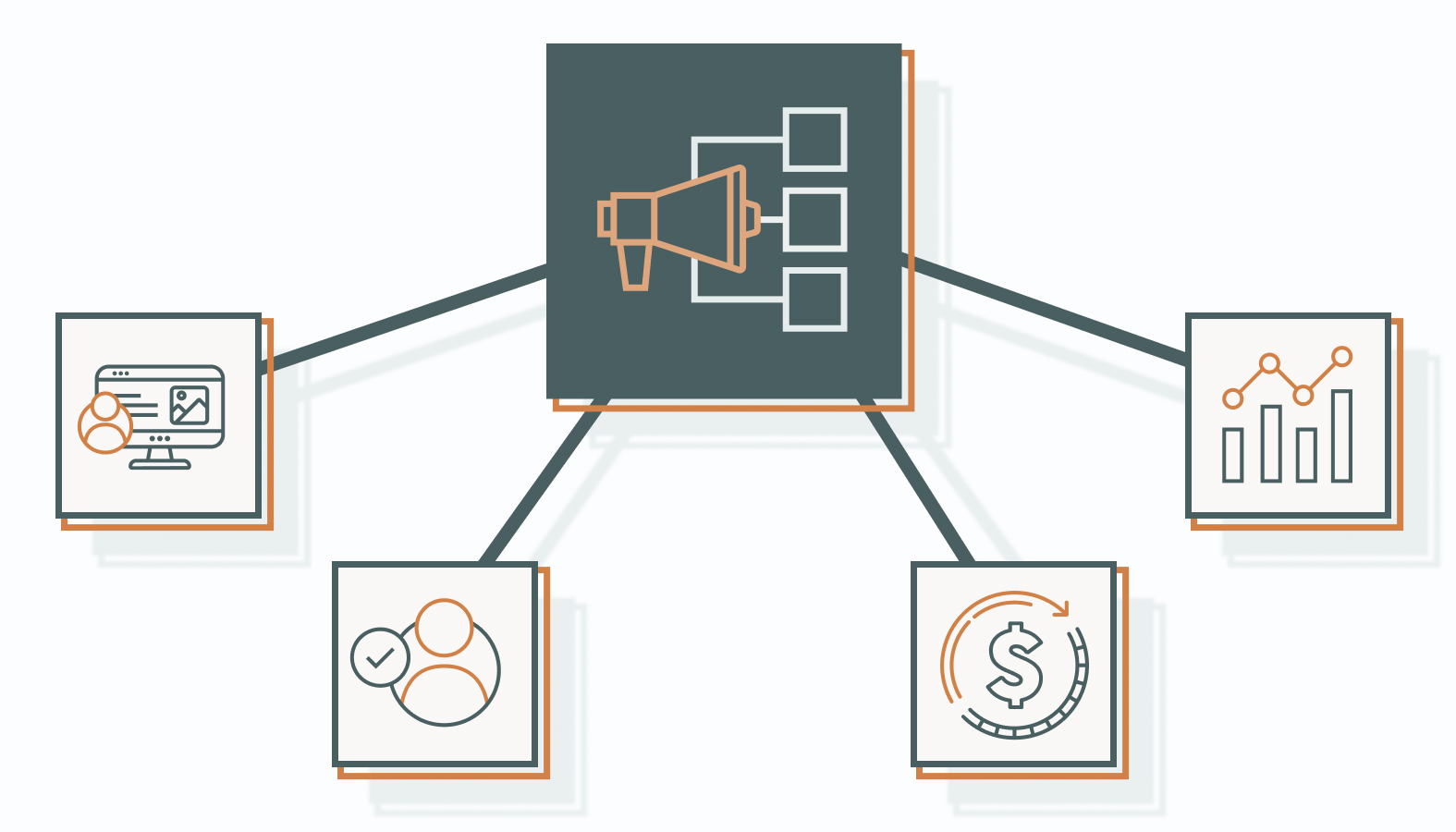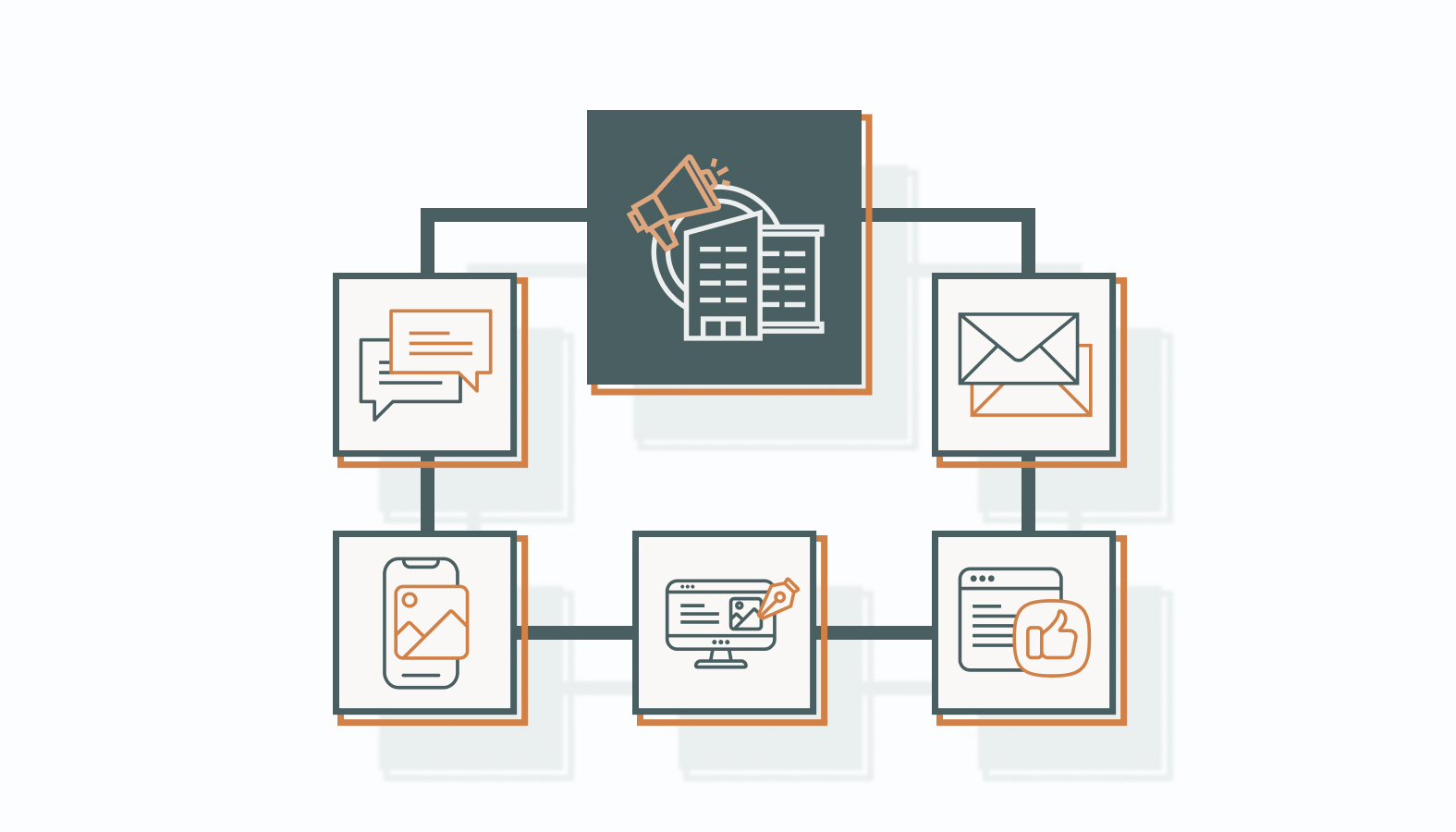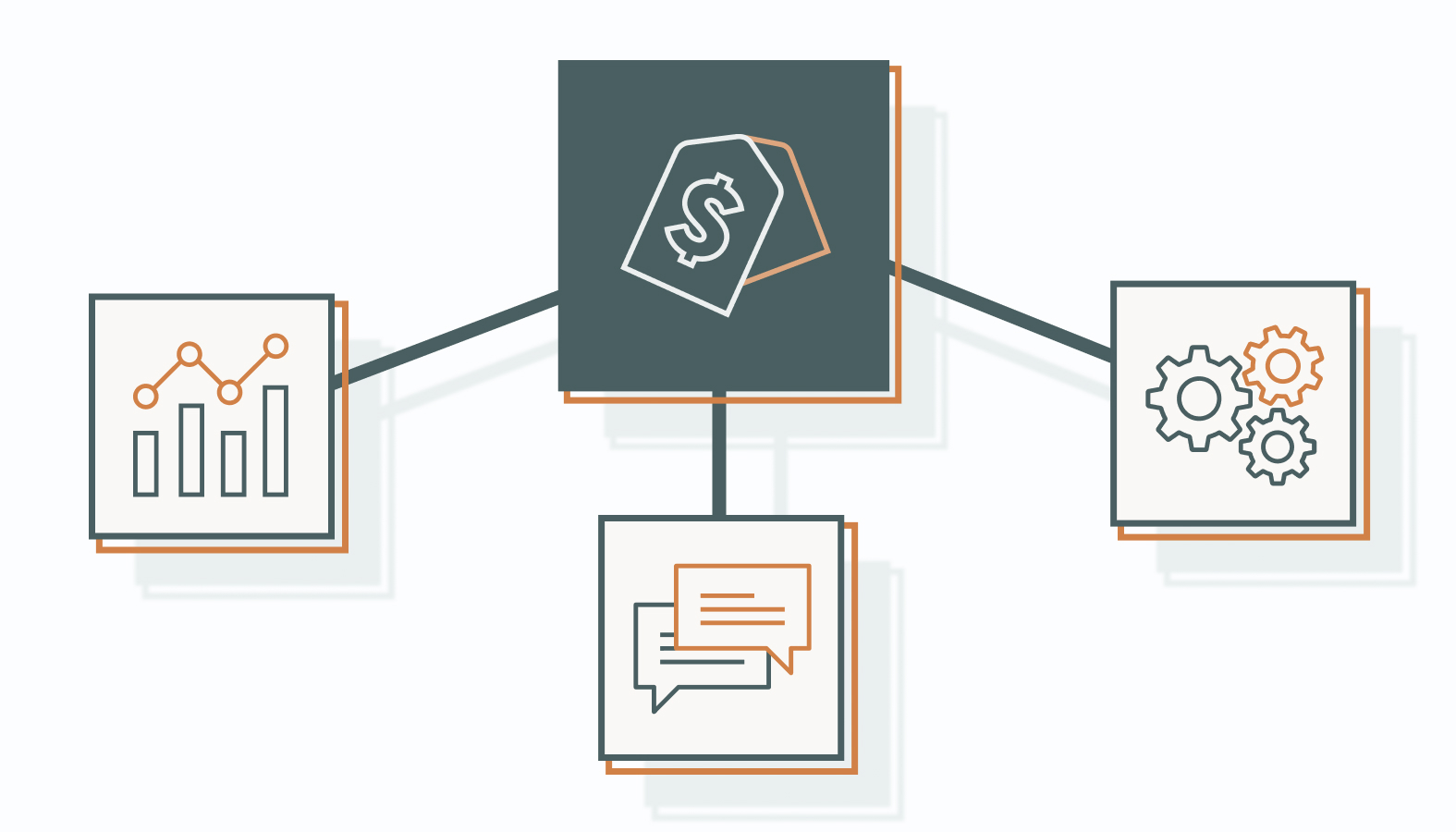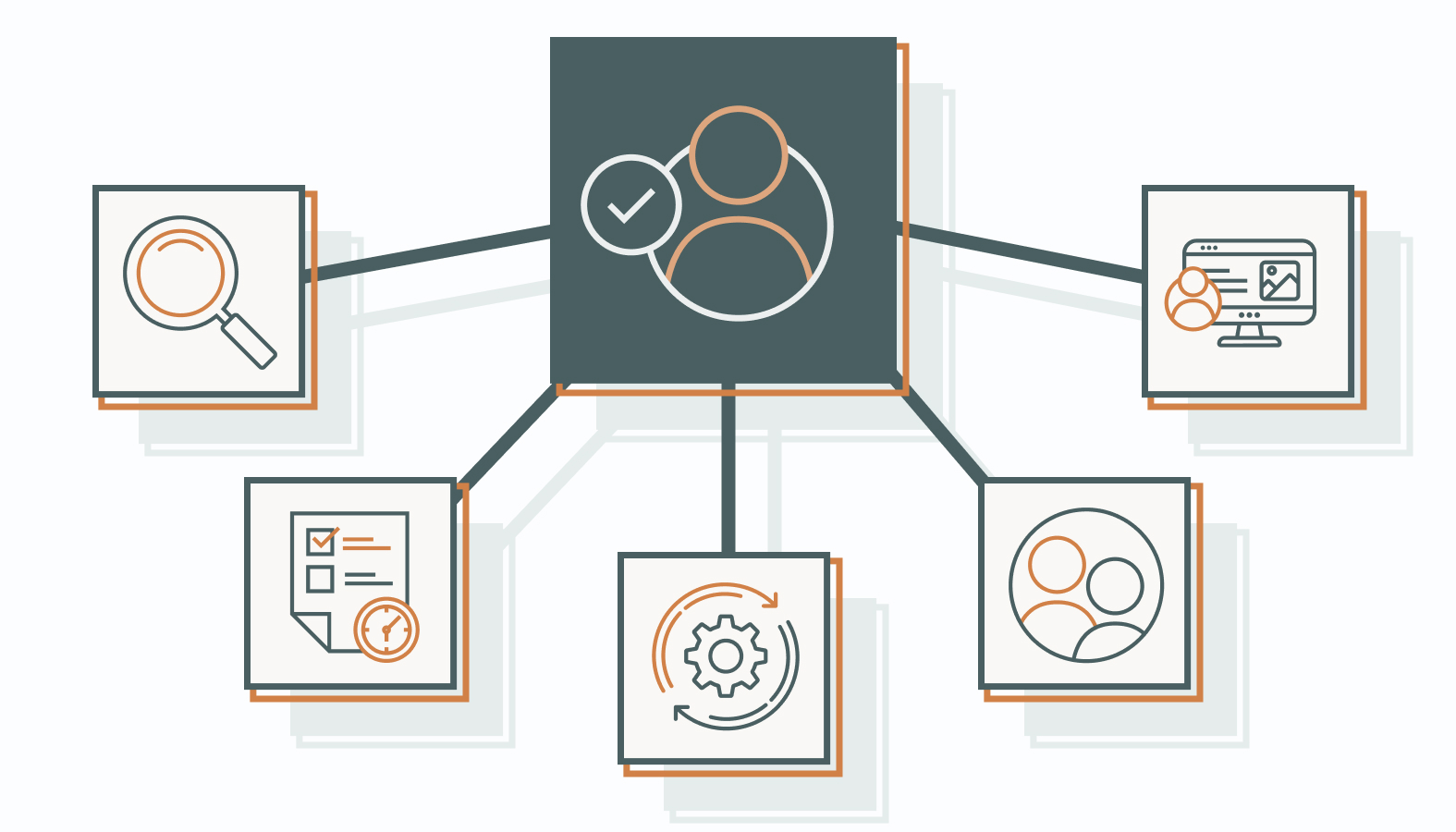Think about the last time you shopped: did you only use one channel? Chances are, you checked reviews online, compared prices on your phone, and maybe even stopped at a store before deciding. Customers expect that kind of flexibility, but many retailers aren’t fully prepared to meet it.
Omnichannel retail marketing offers a way forward by blending digital and physical interactions into a single journey. The challenge? Many retailers struggle with fragmented systems, inconsistent messaging, and poor coordination.
This article will guide you through what omnichannel really means, why it matters, and how to implement it effectively. Let’s dive in.
Omnichannel Retail Marketing 101
Omnichannel retail marketing is a customer-first strategy designed to unify every interaction — from mobile apps and websites to in-store visits and call centers — into one system that works in sync. Rather than treating each channel as a standalone, omnichannel connects them to follow the customer’s lead.
The goal is simple: a shopping journey that feels frictionless and connected, whether a shopper is browsing on Instagram, comparing prices on a laptop, or checking out in-store. Done right, it reduces abandoned carts, creates smoother transitions, and makes each step feel like part of one continuous experience.
Omnichannel vs Multichannel vs Single-Channel Retail
In today’s market, where expectations are rising faster than most retailers can adapt, omnichannel is no longer optional; it has become the baseline for staying relevant.
But this hasn’t always been the case. Retail marketing has evolved through different stages — from single-channel to multichannel — and while those models were effective in their time, they fall short of today’s customer expectations.
Single-Channel Retail
Single-channel retail is the most traditional model. A business sells products through just one channel — a physical storefront, an e-commerce site, or even a mail-order catalog. This strategy can work well for smaller brands with limited resources or highly niche products where simplicity outweighs complexity.
The benefit is clarity. You know exactly where customers are coming from, and you can dedicate all your time, budget, and energy to mastering that one environment. The trade-off? Customers have fewer ways to find or engage with your brand. And if that one channel falls out of favor — say, foot traffic dips or your website loses visibility — your entire business takes the hit.
Pros:
- Easy to manage operations and keep overhead low
- Allows focus on optimizing a single channel
Cons:
- Customer reach is capped at one touchpoint
- Risk increases if consumer behavior shifts away from that channel
- Limited opportunity to personalize or expand the experience
Multichannel Retail
Multichannel retail takes the next step by spreading a brand’s presence across several channels — for example, a physical store, an online shop, and social media storefronts.
Unlike single-channel, customers have choices in how they interact, which often leads to higher visibility and a broader reach.
The challenge, however, is that these channels usually run independently. A shopper might see a product on Instagram, visit your website, and then walk into your store — but those experiences don’t feel connected. The result is reach without consistency. It’s better than single-channel, but it doesn’t quite align with how today’s shoppers expect to transition between touchpoints.
Pros:
- Broader audience reach and more sales opportunities
- Flexibility to meet different customer preferences
- Builds brand presence across multiple platforms
Cons:
- Disconnected experiences can frustrate customers
- Data is siloed, making insights incomplete
- Inconsistent messaging can weaken trust
Omnichannel Retail
Omnichannel retail is the most advanced approach, built on integration rather than expansion. Instead of treating each channel separately, it fuses them into a single ecosystem. A shopper might start on Instagram, continue on your website, and finish with in-store pickup — all without friction.
What sets omnichannel apart is its ability to make each interaction part of a larger relationship. Customers feel recognized at every touchpoint because data and systems sync behind the scenes. It’s complex and resource-intensive, but it aligns with how people actually shop: switching between devices and environments before making a purchase.
Pros:
- Creates seamless journeys across all touchpoints
- Delivers consistent, personalized experiences
- Integrates data for smarter insights and stronger decisions
- Builds long-term loyalty and repeat purchases
Cons:
- Significant investment in systems, training, and alignment required
- Complexity increases as more channels are added
- Needs ongoing optimization to keep channels truly unified
The takeaway: Businesses must weigh these channels to decide which approach aligns best with their strategic goals. A single-channel approach is straightforward but fragile. Multichannel expands reach but often leaves customers juggling disconnected experiences. Omnichannel, while more demanding, is the strategy built for today’s shopper — one who expects consistency, personalization, and the freedom to choose how they engage.
Benefits of Omnichannel Marketing in Retail
In today’s retail environment, omnichannel marketing is a competitive necessity. Here’s how it drives growth and customer satisfaction.
Elevate the Customer Experience
Omnichannel marketing enhances the customer journey by delivering seamless, personalized interactions across every channel. Customers can move fluidly between online and offline touchpoints without losing consistency or context.
A strong example is Starbucks, whose mobile app connects directly with in-store experiences, enabling customers to order and pay ahead, earn rewards, and receive personalized offers.
The result is a convenient, cohesive, and rewarding experience that keeps people coming back.
Build Customer Loyalty
Consistency builds trust, and trust fuels loyalty. When customers feel recognized and valued at every touchpoint, they’re more likely to return. Strong omnichannel strategies reinforce that bond through personalized communication, loyalty programs, and seamless service.
Amazon Prime is a standout example: fast shipping, video streaming, and exclusive deals all tied into one membership. By connecting these benefits in a unified ecosystem, Amazon drives long-term retention and deepens customer commitment.
Boost Sales and Revenue
An omnichannel strategy expands reach while keeping every interaction connected, driving more conversions and repeat purchases. By meeting customers where they are and ensuring a consistent experience, brands can lift both satisfaction and revenue.
Nike demonstrates this well with services like “Reserve in Store” and “Buy Online, Pick Up In-Store,” features that link digital and physical touchpoints to streamline shopping and increase sales.
Harness Data for Insights
The strength of omnichannel marketing comes from the data it generates. When customer information is integrated across platforms, retailers gain a clear view of behavior and preferences that single channels can’t provide.
With tools like Google Analytics, CRM systems, and AI-driven dashboards, businesses can uncover trends, personalize interactions, and refine strategies with precision. The result is smarter decisions, stronger performance, and experiences that feel tailored to each customer.
Elements of a High-Impact Omnichannel Retail Strategy
Omnichannel success isn’t about being present everywhere. It’s about making the right channels work together to create a unified experience. Each channel plays a distinct role, and when optimized in sync, they elevate engagement, loyalty, and revenue.
Email Marketing: The Classic That Still Converts
Email remains one of the most effective channels for promotions, updates, and personalized communication. Its strength is direct, one-to-one engagement.
Automation platforms like Mailchimp and Customer.io ensure campaigns are timely, relevant, and integrated with broader marketing efforts.
Email can also reinforce other channels — for example, following up on a social campaign or prompting a mobile app interaction.
Social Media: Where Engagement Goes Public
Social platforms drive brand presence, visibility, and real-time engagement.
The key is consistency: unified messaging, cross-promotion, and responsive interaction.
Cohesive campaigns can use tools like Hootsuite and Sprout Social to streamline management, track performance, and optimize content that aligns with the broader customer journey.
Personalized Website Interactions: Your Digital Storefront, Smarter
Your website is the central hub of the customer journey.
Personalization tools, such as Optimizely and Dynamic Yield, enable the delivery of tailored product recommendations, dynamic content, and custom landing pages.
If done well, personalization transforms browsing into a curated experience, boosting satisfaction, conversions, and long-term loyalty.
Mobile Optimization: Meet Customers in Motion
With mobile-first shopping now the norm, a seamless mobile experience is non-negotiable. A mobile-friendly experience ensures that on-the-go users can access and interact with a brand regardless of device.
Responsive design, fast load times, and intuitive navigation are table stakes. Integrating mobile apps with other channels, like push notifications and in-app messaging, further enhances the customer journey and ensures customers can pick up right where they left off — whether they’re at home or in-store.
SMS Marketing: Small Messages, Big Impact
SMS stands out for its immediacy. High open and response rates make it ideal for time-sensitive promotions, reminders, and alerts.
Platforms like Twilio and SimpleTexting enable brands to integrate SMS into larger campaigns, complementing email, social, and mobile efforts to keep customers engaged in real-time.
Best Omnichannel Retail Practices
Execution is where omnichannel strategy proves its value. The right practices ensure businesses stay aligned with customer expectations while driving measurable growth.
By combining data intelligence, brand consistency, and engagement tools, retailers can deliver seamless experiences across every touchpoint.
Utilizing Data-Driven Insights
Data is the backbone of successful omnichannel marketing.
Pulling intelligence from every source — website analytics, social media interactions, CRM systems, surveys, and in-store transactions — gives retailers a comprehensive view of customer behavior.
With AI-driven platforms like Tableau and Google Analytics, these insights can be transformed into actionable strategies that personalize interactions, refine campaigns, and enhance performance across various channels.
Maintaining Consistent Brand Messaging
Customers should recognize one voice and one identity wherever they interact with your brand. Consistency builds trust and loyalty, but it requires discipline and persistence.
Comprehensive brand guides, cross-channel content planning, and tools like HubSpot or WordPress help ensure alignment across campaigns and platforms.
Regular audits can also identify gaps, ensuring every touchpoint remains on-message and reinforcing brand credibility.
Integrating Customer Engagement Tools
Engagement tools transform strategy into a real-time connection.
Chatbots deliver instant support, while feedback platforms, such as Qualtrics, capture live customer sentiment, and CRM solutions, like Salesforce or Zendesk, help businesses track and personalize interactions at scale.
When these tools work together, they not only solve problems quickly but also strengthen relationships and encourage customers to return.
How to Execute a Killer Omnichannel Retail Strategy
Crafting a successful omnichannel retail strategy isn’t about checking boxes on digital and physical channels. It’s about creating a seamless, personalized, and consistent customer experience across every interaction.
To make that vision a reality, businesses need to move methodically. They need a structured framework to help retailers execute omnichannel strategies that not only look good on paper but also drive measurable results.
1. Conduct In-Depth Customer Research: Building the Foundation
Every effective omnichannel strategy begins with a clear understanding of the customer. Without it, even the most advanced technology or polished campaigns will fall flat.
How to research effectively:
- Qualitative methods: Surveys and focus groups reveal patterns in attitudes and motivations.
- Quantitative tools: CRM systems, Google Analytics, and CDPs track purchase behavior, browsing history, and engagement trends.
- User journey mapping: Visualizes how customers move from awareness to purchase across various touchpoints. Brands like Nike and Sephora invest heavily in mapping to spot drop-off points and create smoother transitions.
Customer research should also account for emerging preferences. For example, younger shoppers increasingly expect hybrid shopping models—like buying online and picking up in-store—while older demographics may prioritize personalized in-store service.
Recognizing these generational nuances ensures strategies are built on real, current behavior rather than assumptions.
The key takeaway: research informs every other decision. It determines which channels matter most, what level of personalization customers expect, and where businesses can differentiate themselves in crowded markets.
2. Formulate a Detailed Plan: Setting the Direction
Once research is complete, businesses must translate insights into a clear, executable plan. A strong omnichannel strategy doesn’t try to do everything at once. It sets focused objectives and builds timelines around achievable milestones.
Planning essentials:
- Set objectives: Foot traffic, online conversions, or retention rates.
- Audit capabilities: What systems, staff skills, and resources are in place? Where are the gaps?
- Spot friction points: A retailer may have a robust e-commerce site but lack inventory management for real-time stock synchronization. Identifying those friction points early prevents execution bottlenecks later.
- Segment customers: Not all groups engage in the same way, so retailers should define priority segments and determine where to focus their resources. Gen Z may prefer TikTok-driven funnels, while millennials respond to loyalty-based email campaigns.
A detailed plan is more than a roadmap. It’s also a rallying point that aligns executives, marketing, operations, and frontline staff toward shared goals.
3. Select Optimal Technology Platforms: Creating the Backbone
Technology is the infrastructure that makes omnichannel strategies possible. Without the right platforms, silos form, data breaks down, and customer trust suffers.
What to prioritize:
- E-commerce and Retail Platforms: Salesforce Commerce Cloud, Shopify Plus, and Magento unify digital storefronts with in-store systems at an enterprise level.
- Workflow Automation: Zapier and Make (formerly Integromat) connect apps that don’t naturally talk to each other, streamlining processes without requiring heavy custom code.
- Analytics Tools: Adobe Analytics, Mixpanel, and Google Analytics 4 deliver cross-channel insights that inform smarter marketing and operational decisions.
- CRM and Loyalty Platforms: HubSpot, Klaviyo, and Dynamics 365 allow for personalization and customer journey management across email, SMS, and in-store interactions.
A strong case study here is Nike’s digital ecosystem. The brand integrates its website, app, loyalty program, and in-store systems so customers can browse online, reserve shoes in the app, try them in-store, and redeem rewards seamlessly.
Pro tip: Opt for tools that strike a balance between power and usability. It’s often better to adopt fewer, fully integrated systems than stitch together a patchwork of disconnected apps.
4. Empower and Train Your Team: Turning Strategy Into Action
Even the best research, plans, and platforms fall apart without people who can execute them. Employees are the ones who carry strategy from slides into reality, so training and empowerment are critical.
Training priorities:
- Technical skills: Using POS systems, CRM dashboards, and mobile tools.
- Customer engagement: Recognizing online activity when a shopper walks into a store.
- Scenario training: Role-playing, workshops, and digital modules.
Apple stores are a standout example here—staff members are trained not only on product knowledge but also on how to maintain consistent service quality across appointments, Genius Bar interactions, and digital touchpoints.
When employees feel empowered, they do more than solve problems. They strengthen brand perception. Confident, consistent service is what builds trust and long-term loyalty.
5. Customize the Customer Experience: Delivering Personalization at Scale
The final step is where the omnichannel strategy comes to life: personalization.
Customers expect every interaction to feel relevant, whether they’re opening an email, browsing online, or walking into a store.
Personalization in action:
- Digital: Amazon’s recommendation engine uses browsing history, purchases, and peer behavior to serve highly targeted suggestions.
- In-store: Luxury brands like Burberry equip associates with tablets that display customer purchase history or loyalty data for tailored service. This leads to in-store experiences that feel uniquely tailored, even when serving hundreds of customers daily.
- Adaptive personalization: Adjusting content by context — mobile notifications for on-the-go updates, emails for follow-up, and in-store prompts for real-time engagement.
Tools like Segment and Adobe Experience Cloud help unify cross-channel data to fuel this kind of personalization at scale.
When executed step by step, this process transforms omnichannel from a buzzword into a growth engine. Research lays the foundation, planning sets the course, technology creates the backbone, teams bring it to life, and personalization makes it resonate.
Challenges and Solutions in Omnichannel Marketing
An omnichannel strategy promises seamless, customer-first experiences.
But the road to execution is rarely smooth. Retailers face a mix of technical, organizational, and compliance hurdles that can slow progress. The good news: with the right fixes, these challenges become opportunities to sharpen operations and strengthen loyalty.
Integrating Disparate Systems
Disconnected systems are one of the biggest blockers. Retailers juggle e-commerce platforms, CRMs, inventory tools, and marketing software that rarely sync, creating data silos and fragmented customer views.
The fix is integration. Middleware like MuleSoft or iPaaS platforms link tools, while APIs keep data flowing in real-time. A centralized CDP takes it a step further, unifying customer information across all touchpoints.
The payoff is clear. A fashion retailer tying POS to online inventory can offer real-time “buy online, pick up in-store” without stock issues. Integration isn’t plumbing—it’s the backbone of the experience customers expect.
Ensuring Consistent Customer Experience
You can’t claim omnichannel if your tone, offers, or service change by channel. Inconsistency confuses customers and weakens trust.
Discipline fixes it. Standardized messaging and service processes, paired with a centralized CMS, keep campaigns aligned across email, apps, and in-store displays.
Execution depends on people. Regular cross-team training ensures staff—from marketers to store associates—deliver a unified brand voice. Sephora nails this, making each channel feel like one seamless conversation.
Managing Data Privacy and Security
Omnichannel success depends on data, but mishandling it kills trust. Weak security or unclear policies leave the door open to regulatory issues and damage to reputation.
Best practices begin with robust security, encompassing encryption, authentication, and regular audits. Governance matters too—clear compliance processes (such as GDPR and CCPA) and employee training keep the business aligned.
Customers also reward transparency. Brands that clearly explain their data use and provide real control earn credibility. Apple’s stance turned privacy into brand equity. Smart retailers can do the same.
Aligning Organizational Structure and Culture
Technology isn’t enough—organizations must evolve. Too many retailers operate in silos, with marketing, operations, and service chasing separate KPIs.
Leadership sets the tone. Clear omnichannel objectives, shared accountability, and cross-functional collaboration break down walls and align teams.
Culture makes it stick. Recognizing team wins, investing in education, and showing employees how omnichannel benefits customers builds momentum. Walmart’s unified digital and physical teams are a testament to the fact that culture drives execution.
Measuring Omnichannel Performance
Without measurement, strategy is guesswork. Retailers need hard proof that their efforts drive results.
The right KPIs go beyond sales: lifetime value, repeat purchases, satisfaction scores, and channel conversion rates give a real picture. Tools like Tableau, HubSpot, and Google Analytics make insights accessible.
Continuous review keeps strategies sharp. Retailers who track, test, and adapt stay agile. That agility is often the difference between growth and stagnation.
Bridging Channels, Building Relationships: Omnichannel as the New Baseline
Omnichannel is no longer about individual channels. It is about one continuous journey that follows the customer wherever they go.
Executing a killer omnichannel strategy requires discipline, coordination, and adaptability.
The process looks like this:
- Research customers deeply: Know them better than they know themselves.
- Build a focused, realistic plan: Set priorities that actually move the needle.
- Invest in scalable technology: Create the backbone for seamless integration.
- Train and empower teams: Equip people to deliver consistently, everywhere.
- Personalize across every channel: Make every interaction feel tailor-made.
Retailers who commit to this process don’t just meet customer expectations—they exceed them. And in retail, that’s what drives loyalty, advocacy, and long-term growth.
The future of retail marketing belongs to businesses that treat omnichannel as the baseline, not the bonus. When every touchpoint feels connected, customers notice. And when they feel recognized at every step, they return.
Ready to Build What’s Next?
Omnichannel isn’t theory—it’s execution. If you want to turn these strategies into measurable results for your business, let’s talk.
Our team has guided brands through the complexity of building seamless customer experiences, from selecting the right platforms to aligning culture and KPIs. We’ll cut through the noise and focus on what actually drives growth.
Schedule a conversation today. The retailers who lead with omnichannel will own the next decade — make sure you’re one of them.

